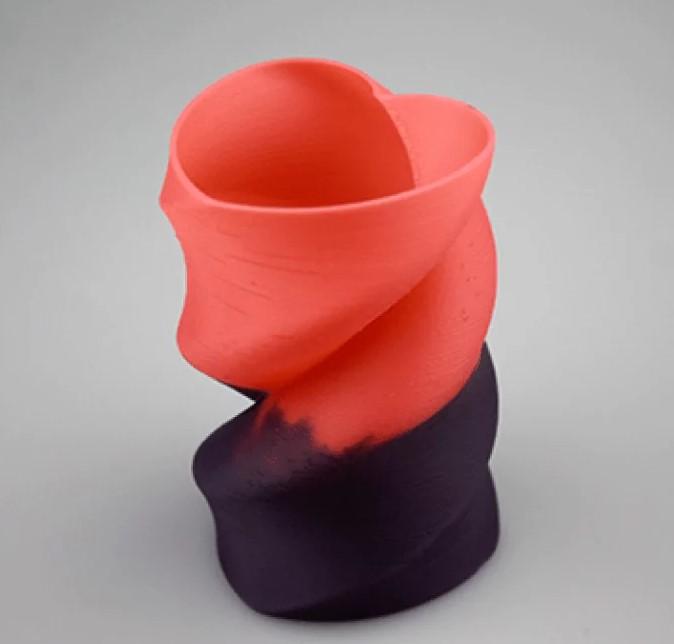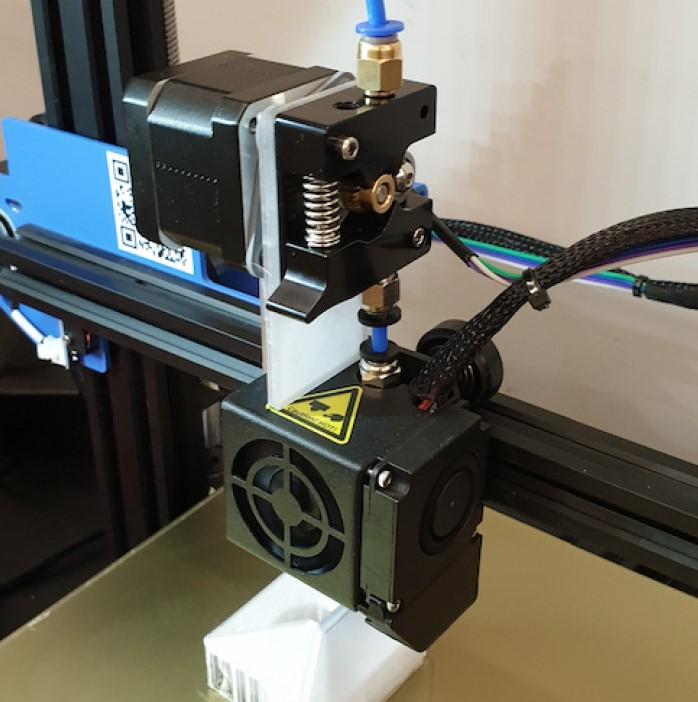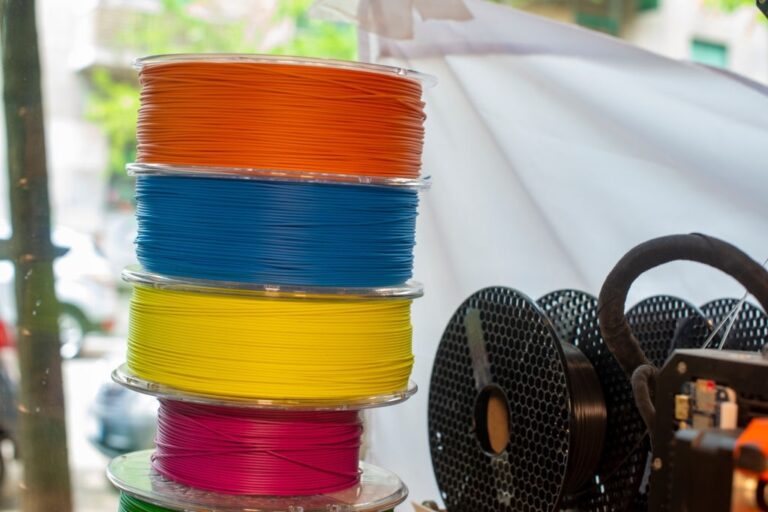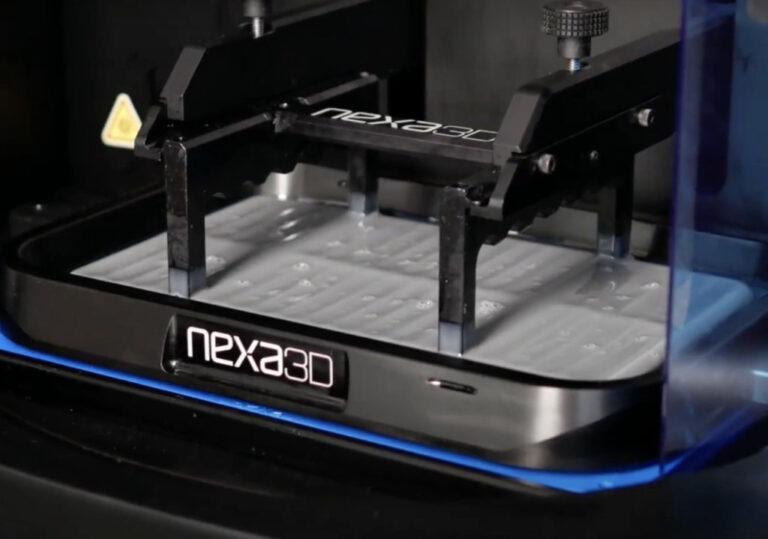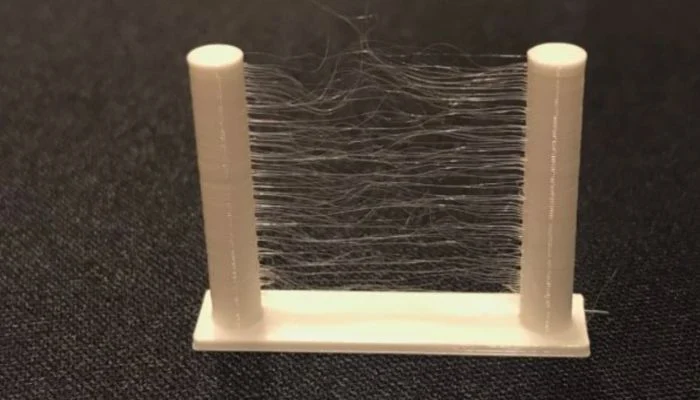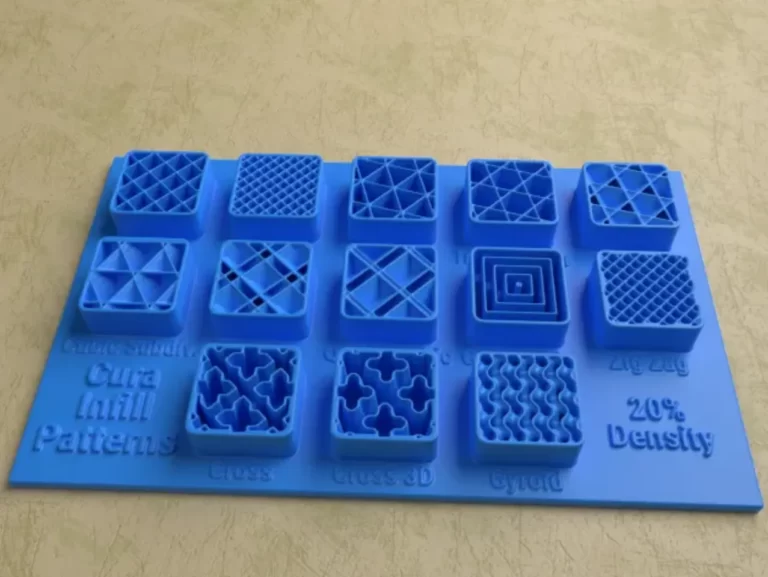Nylon 3D Printer: What You Need to Know
Introduction
3D printing changed manufacturing and part production by allowing complex structures to be created easily. The popularity of 3D printing resulted in the development of new materials for specific applications. These materials satisfy various requirements and enable the creation of functional and durable parts. Nylon is one such substance, an adaptable and resilient thermoplastic that is gaining popularity for 3D printing.
Nylon 3D printing material is better than other 3D printing materials. It can produce strong and flexible prints with excellent resistance to heat and chemicals. However, printing with Nylon filament requires unique parameters and tools. It is important to understand the basics of printing with Nylon filament, including its benefits, challenges, and best practices.
This blog post will cover the advantages, difficulties, and potential uses of nylon 3D printing. We’ll give advice on using nylon filament for 3D printing and best practices. We’ll also provide a quick rundown of sectors and disciplines that use nylon printing. Whether beginner or expert, this tutorial will give you the information needed for optimal nylon printing results.
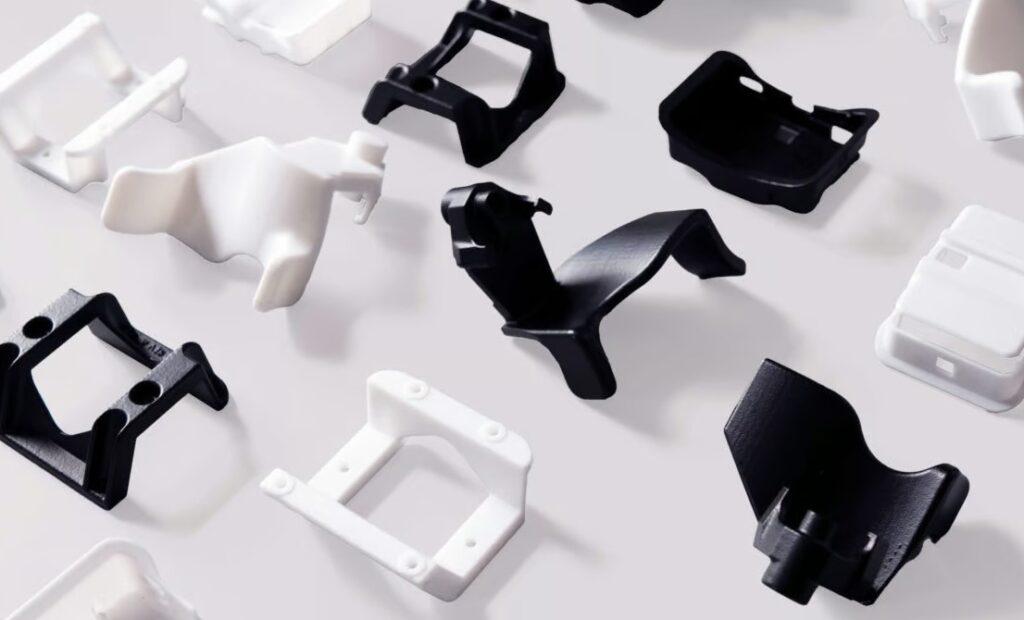
what is nylon 3D printing?
Nylon 3D printing refers to the use of a 3D printer and nylon filament to produce three-dimensional objects. Its strength, durability, and flexibility make nylon, a thermoplastic material, the perfect choice for a variety of applications. The printer melts and extrudes nylon filament into a nozzle, where it stacks and fuses to create the desired object. Nylon 3D printing is popular for durable and flexible parts in various industries. It’s commonly used for automotive parts, prosthetics, and consumer goods. However, printing with nylon filament requires specific settings and tools. Nylon is hygroscopic, meaning it absorbs moisture from the air. Moisture can negatively impact the quality of prints. As a result, it’s crucial to comprehend the fundamentals of nylon 3D printing, including its benefits, drawbacks, and best practices.
Importance of knowing the basics of 3D printing with nylon filament
Producing high-quality prints requires understanding the basics of 3D printing with nylon filament. Nylon has unique properties, so specific printing settings and tools are required. Learning about the benefits and drawbacks of nylon filament and preparing it for printing is crucial. Knowing the best techniques for printing with nylon filament will optimize the printing process and achieve the best results.
Knowing how to print with nylon filament is important. It can create new opportunities for producing sturdy and flexible parts. You can use it for a variety of applications. This is especially important because there is a growing demand for 3D printing across numerous industries. Learning the basics of nylon filament 3D printing is important. It helps to achieve good prints. It also helps to unleash the full potential of additive manufacturing technology.
Advantages of Printing with Nylon Filament
Compared to other 3D printing materials, nylon filament printing has a number of benefits. Thermoplastic nylon is a strong polymer with good heat and chemical resistance. It is perfect for various applications and creates robust and flexible parts. Nylon printing creates parts with a low coefficient of friction suitable for sliding or rotating parts. Nylon is hygroscopic, so it can absorb moisture and improve performance in some cases. Most 3D printers can print nylon filament in multiple colors, making it accessible. Nylon printing is advantageous for automotive, aerospace, consumer products, and hobbyists.
Durable and strong prints
Printing with nylon filament produces strong and durable prints. Nylon’s toughness and flexibility make it ideal for parts requiring strength and resilience. Nylon parts resist deformation and absorb impact, suitable for automotive, consumer, and industrial use. Nylon prints have high resistance to wear and tear for friction or repeated use. The nylon filament is an excellent choice for creating parts that need to perform under stress and harsh conditions.
Heat resistance
Nylon filament is a popular material for high-temperature applications due to its heat resistance. Its melting point is around 260°C, higher than many other 3D printing materials like PLA and ABS. Nylon is ideal for parts that need to function in hot environments, like engine components or appliances. Its dimensional stability and heat resistance make printed objects less likely to bend or warp when exposed to heat. Nylon is great for creating molds and tooling for high-temperature manufacturing processes. Its heat tolerance makes it an excellent option for both industrial and consumer applications that require high-performance parts.
Chemical resistance
The outstanding chemical resistance of nylon fiber is an additional benefit. Thermoplastic nylon is resistant to a wide range of substances, including acids, solvents, and oils. This makes it the perfect material for making industrial parts and laboratory equipment that must endure exposure to harsh chemicals. Nylon has high chemical resistance, so it is often used to create parts for medical devices and food-processing machinery. It is durable and resistant to pollutants, making it less likely to degrade over time. Because of this, nylon is a great choice for parts that must withstand exposure to corrosive substances or situations. Manufacturers frequently utilize nylon for its chemical resistance in a wide range of applications.
Flexibility and elasticity
Nylon filament is great for flexible parts that need to bend or give slightly. Nylon 3D-printed components can flex and bend without breaking, perfect for hinges and gears. The nylon is perfect for impact-resistant parts that can absorb energy without breaking. Nylon’s elasticity makes it possible to print prosthetics or custom braces that require molding or sculpting. Nylon is commonly used in automotive, aerospace, and consumer products due to its strength and flexibility.
Low friction coefficient
Nylon filament has a low coefficient of friction, perfect for making gears and bearings. Nylon parts are ideal for conveyor belts and roller systems requiring smooth movement. Low friction also reduces the tendency to stick or bind. Nylon filament reduces wear on other components, making it perfect for replacement parts. Manufacturing, automotive, and robotics industries use nylon filament due to its low coefficient of friction.
Challenges of Printing with Nylon Filament
While using nylon filament for printing has numerous benefits, there are a few potential drawbacks as well. Nylon absorbs moisture from the air. This affects print consistency and quality. Moisture in nylon can cause bubbles or voids in prints. The final product becomes weaker and less robust. We advise users to dry nylon filament in a low-temperature oven before printing to minimize this problem. They should also store the nylon filament in a dry area or sealed container until usage.
The propensity of nylon filament to warp or curl when printing presents another difficulty. Due to its high coefficient of thermal expansion, nylon filament may contract and warp as it cools. Use a heated build plate for better results. Consider using high-quality adhesives like glue or hairspray. You can also try using a raft or brim around the part. These techniques will promote adherence and reduce warping. Following these tips will help solve this issue.
Finally, because it needs higher temperatures and slower printing rates than certain other materials, nylon filament might be more challenging to print with. This may necessitate the use of more sophisticated printing equipment as well as longer print times and greater energy expenses. With the right setup and printing methods, one can overcome the difficulties of printing with nylon filament and produce high-quality, robust pieces.
Nylon filament’s hygroscopic nature
Nylon filament’s hygroscopic nature is one of the main challenges of printing with this material. The nylon has a tendency to absorb moisture from the air, which can affect its print quality and consistency. Moisture in nylon filament can cause bubbles or voids to form in the printed part, resulting in a weaker and less durable final product. To mitigate this issue, we recommend storing nylon filament in a dry environment or sealed container until use. Additionally, it’s important to dry the filament in a low-temperature oven prior to printing, to remove any absorbed moisture.
One solution to the challenge of printing with nylon filament’s hygroscopic nature is to use a filament dryer. You can use a filament dryer to remove moisture from the nylon filament before printing. These devices use heat and airflow to dry the filament, which can improve its print quality and consistency. You can purchase or build filament dryers at home to ensure that nylon filament is dry and ready to use for high-quality 3D printing. Filament dryers are an effective way to achieve this.
Warping and curling
Warping and curling are other common challenges when printing with nylon filament. This is due to the high coefficient of thermal expansion of nylon, which can cause it to shrink and warp as it cools. Several techniques can address this issue. One of the most effective ways to prevent warping is to use a heated build plate. A heated build plate can help to keep the temperature of the printed part consistent throughout the printing process, reducing the likelihood of warping.
To solve the challenge of warping and curling, you can use a brim or raft around the part you are printing. Printing a thin layer of material around the base of the part creates a brim or raft. This can help to increase adhesion to the build plate and prevent warping by distributing the stress of cooling more evenly across the printed part.
Finally, using a high-quality adhesive like glue or hairspray can also help to prevent warping. Applying a thin layer of adhesive helps parts adhere firmly to the build plate. This reduces the likelihood of warping. Combining techniques effectively address the challenges of printing with nylon filament. It results in high-quality prints.
Difficulty in achieving a smooth surface finish
The difficulty of obtaining a smooth surface finish is one of the difficulties of printing with nylon filament. Because of its slightly rough surface and cooling characteristics, nylon often results in a surface with a textured appearance. For parts that need a smooth surface, such as those utilized for cosmetic or practical purposes, this can be troublesome. It may also be more challenging to apply paint, varnishes, or other finishing treatments due to the texture.
However, one can utilize a number of methods to enhance the surface polish of objects printed with nylon filament. Increasing the print temperature is one of the best strategies. Raising the print temperature will make the nylon more fluid and easier to flow, which can result in a smoother surface finish. Using post-processing methods to produce a smoother surface finish, such as vapor smoothing, polishing, or sanding, is another option.
Using a high-quality filament is another method to get a smooth surface finish. Several producers make nylon filament with surface-finish-improving additions like carbon fiber or glass fibers. Utilizing a high-quality 3D printer and ensuring its correct calibration can improve the surface texture of nylon prints. Combining these methods makes it feasible to get beyond the difficulty of printing with nylon filament and producing a smooth surface finish.
Need for specialized printing settings and equipment
Printing with nylon filament requires specialized printing settings and equipment due to its unique properties. The high melting point and hygroscopic nature of nylon require specific printing parameters, such as a higher printing temperature and the use of a heated chamber to prevent moisture from entering the filament.
Using a 3D printer specifically designed for printing with nylon filament is one solution to this challenge. Some manufacturers design 3D printers with built-in features, such as heated chambers, specialized bed adhesion systems, and high-temperature hot ends, specifically for use with nylon filaments. These printers can provide more consistent results and require less manual tweaking of printing settings.
Using specialized printing settings optimized for printing with nylon filament is another solution. These settings may include a higher printing temperature, slower print speeds, and the use of a brim or raft to improve bed adhesion. By using these settings, it is possible to achieve high-quality prints with nylon filament without investing in specialized equipment.
Printing with nylon filament may need special settings and equipment, but there are solutions available. Combining specialized equipment and settings can produce high-quality prints with nylon filament. You can take advantage of its unique properties.
Preparation for Printing with Nylon Filament
Preparation is an important step when printing with nylon filament, as it can help to ensure the success of the print and prevent issues such as warping, curling, or poor bed adhesion. One important step in preparing for printing with nylon filament is to store the filament properly. Nylon is hygroscopic, which means that it absorbs moisture from the air over time. This can lead to issues such as clogging or inconsistent extrusion. Storing the filament in a dry place, such as a sealed container with a desiccant packet, is important until you are ready to use it.
Another important step in preparation is to ensure that the printing surface is clean and properly prepared. Nylon filament requires a heated bed to ensure good bed adhesion, and it is important to clean the bed surface thoroughly before printing. You can clean the bed using isopropyl alcohol or another cleaning solution to improve bed adhesion and prevent issues such as warping.
Additionally, it is important to adjust the printing settings to account for the unique properties of nylon filament. This may include adjusting the printing temperature, print speed, or layer height to achieve optimal results. It may also be necessary to use a brim or raft to improve bed adhesion and prevent warping.
By taking these steps to prepare for printing with nylon filament, it is possible to achieve high-quality prints with consistent results. Proper preparation can help to overcome the challenges associated with printing with nylon filament and take advantage of the unique properties of this material.
Filament storage and handling
To ensure successful 3D printing, one must handle and store nylon filament properly. Because it is hygroscopic, nylon can take in moisture from the surrounding environment. This may result in a variety of printing problems, including inconsistent extrusion, poor layer adhesion, and clogging. As a result, it’s crucial to keep nylon filament dry when storing it.
You can keep nylon filament in a container that you seal and that has a desiccant pack. This will assist in absorbing any moisture that may be in the air and stop the filament from absorbing it. When the filament is not in use, it’s also crucial to keep it away from moisture or humidity. This can entail keeping it out of the sun and away from extremely hot or cold temperatures.
You must handle nylon filament carefully and store it properly to prevent damage or contamination. Avoid touching the filament with your bare hands when handling it since the oils and moisture from your skin may transfer to the filament and impair how well it prints. Wearing gloves or taking other safety precautions can avoid this.
Overall, managing and storing nylon filament properly is essential to producing consistent, high-quality prints. It is feasible to reduce the chance of problems like poor adhesion, clogging, or inconsistent extrusion and take use of the special qualities of this material by handling the filament carefully and storing it in a dry environment.
Bed preparation
Proper bed preparation is important for successful 3D printing with nylon filament. Nylon has a tendency to warp and curl during printing, which can result in poor adhesion and failed prints. Therefore, it is important to prepare the printing bed properly to ensure good bed adhesion and prevent warping.
One way to prepare the bed for printing with nylon filament is to clean it thoroughly using isopropyl alcohol or another cleaning solution. This will help to remove any debris or oils that may be present on the surface and improve adhesion. It is important to avoid using acetone or other harsh solvents, as these can damage some types of printing beds.
Ensuring proper bed leveling is another important step in bed preparation. A level bed is important for achieving good adhesion and preventing issues such as warping or poor layer adhesion. You can level the bed by using a level tool or manually adjusting it until it is level.
Finally, it may be necessary to adjust the printing settings to account for the unique properties of nylon filament. This may include adjusting the printing temperature, print speed, or layer height to achieve optimal results. It may also be necessary to use a brim or raft to improve bed adhesion and prevent warping.
By taking these steps to prepare the bed for printing with nylon filament, it is possible to achieve high-quality prints with consistent results. Proper bed preparation can help overcome the challenges associated with printing with nylon filament and enable the user to take advantage of the unique properties of this material.
Nozzle temperature and cooling settings
When printing with nylon filament, it is important to carefully adjust the nozzle temperature and cooling settings to achieve the best results. Nylon has a relatively high printing temperature compared to other materials, typically between 240-260°C. Ensuring that you set the nozzle temperature correctly is crucial to avoid issues such as under-extrusion or poor layer adhesion.
In addition to the nozzle temperature, it is important to consider the cooling settings when printing with nylon filament. Unlike other materials, nylon does not require as much cooling during printing. Too much cooling can actually cause warping and other issues. Therefore, it is important to adjust the cooling fan settings appropriately to avoid these problems. In some cases, it may be necessary to turn off the cooling fan altogether or to reduce its speed to avoid excessive cooling.
Another important factor to consider when adjusting the nozzle temperature and cooling settings is the print speed. To ensure proper melting and bonding of the layers, it is best to print nylon filament at a slower speed compared to other materials. Additionally, printing too fast can cause the filament to cool too quickly and result in poor layer adhesion and warping.
In summary, when printing with nylon filament, it is important to carefully adjust the nozzle temperature, cooling settings, and print speed to achieve optimal results. Taking the time to adjust these settings can help to prevent issues such as warping and under-extrusion, and ensure that the finished prints are of high quality.
Use of adhesives and other techniques for reducing warping
Warping is a common issue when printing with nylon filament due to its tendency to absorb moisture and expand during printing. Several techniques and adhesives can reduce warping and improve print quality.
One effective method is to use a print bed adhesive, such as a glue stick, hairspray, or specialized adhesives designed for 3D printing. These adhesives help to improve adhesion between the print bed and the nylon filament, reducing the likelihood of warping. The user can also use them to create a barrier between the print bed and the filament, preventing the filament from absorbing moisture from the bed.
Another technique that can be used to reduce warping is to increase the print bed temperature. Nylon filament typically requires a higher print bed temperature compared to other materials, often between 70-90°C. This higher temperature helps to improve adhesion between the print bed and the filament and reduces the likelihood of warping.
Finally, it is important to ensure that the print bed is level and properly calibrated before printing with nylon filament. A level bed helps to ensure that the filament is deposited evenly and prevents uneven cooling, which can lead to warping. Calibrating the bed ensures that the nozzle is at the proper distance from the bed, allowing for proper filament deposition and adhesion.
In summary, the use of adhesives, higher print bed temperatures, and proper bed calibration can all help to reduce warping when printing with nylon filament. These techniques can improve print quality and ensure that the finished prints are of high quality.
Best Practices for Printing with Nylon Filament
Printing with nylon filament can be challenging, but by following some best practices, you can achieve high-quality prints with this material.
One of the most important best practices is to properly dry the filament before printing. Nylon filament is highly hygroscopic, meaning it easily absorbs moisture from the environment. Moisture can cause filament to swell, bubble, or print poorly, so it is essential to dry the filament before printing. This can be done by storing the filament in a dry place, using a filament dryer, or baking the filament in an oven at a low temperature.
Another best practice is to use an enclosure when printing with nylon filament. An enclosure can help to maintain a consistent temperature and prevent drafts, which can cause uneven cooling and warping. A cover over the printer or a DIY enclosure can be used to achieve this.
It is also important to use a suitable printing surface for nylon filament, such as glass or a polyimide sheet. This helps to ensure good adhesion between the filament and the bed, and can prevent warping. Bed adhesives, such as glue stick or hairspray, can also be used to improve adhesion.
Additionally, it is important to use a high nozzle temperature and slow print speed when printing with nylon filament. This can help to ensure that the filament is properly melted and deposited, resulting in a strong and durable print.
In summary, best practices for printing with nylon filament include properly drying the filament, using an enclosure, using a suitable printing surface, using bed adhesives, and using a high nozzle temperature and slow print speed. By following these practices, you can achieve high-quality prints with nylon filament.
Recommended printing settings for different types of nylon filament
Depending on the particular type of nylon filament being used, different printing settings may be advised for nylon filament. Here are some general pointers for printing with various nylon filament types:
Nylon 6: This variety of nylon filaments is fairly simple to print with and has strong mechanical properties. The following printing parameters are advised: a print speed of 30–60 mm/s, a bed temperature of 60–80 °C, and a nozzle temperature of 240–260 °C.
Nylon 12: This type of nylon filament has excellent chemical resistance and is very flexible. The nozzle temperature setting should be between 245-265°C, the bed temperature should be between 80 and 100°C, and the print speed should be between 20 and 40 mm/s.
Bridge Nylon: This nylon strand is excellently strong and robust and was made for bridge. The following printing parameters are advised: print speed of 20–40mm/s, nozzle temperature of 235–255°C, and bed temperature of 80–100°C.
Carbon Fiber Nylon: Carbon fiber is used to reinforce this particular type of nylon filament, which increases its strength and durability. The nozzle temperature setting should be between 245-265°C, the bed temperature should be between 60 and 80°C, and the print speed should be between 20 and 40 mm/s.
Glass Fiber Nylon: This nylon filament’s glass fiber reinforcement significantly increases its resistance to abrasion and impact. The nozzle temperature setting should be between 245-265°C, the bed temperature should be between 80 and 100°C, and the print speed should be between 20 and 40 mm/s.
It is crucial to keep in mind that these are only general recommendations, and the precise parameters could change depending on the brand and nylon filament formulation being utilized. To find the best settings for your particular configuration, it is advised to refer to the manufacturer’s instructions and run a few test prints.
Tips for minimizing warping and curling
Warping and curling are common challenges when printing with nylon filament, but there are several tips and techniques that can be used to minimize these issues.
- Use a heated bed: Nylon filament requires a heated bed to prevent warping and curling. A bed temperature of 80-100°C is recommended for most types of nylon filament.
- Use a raft or brim: Adding a raft or brim to your print can help improve bed adhesion and prevent warping. A raft is a layer of material that is printed beneath the object being printed, while a brim is a narrow ring of material that is printed around the base of the object.
- Use a larger nozzle: A larger nozzle can help reduce the risk of warping and curling by increasing the flow of filament and reducing the time it takes for each layer to cool.
- Use a nylon-specific adhesive: Applying a nylon-specific adhesive to the build plate can help improve bed adhesion and prevent warping. Some popular options include nylon-specific hairspray and PVA glue.
- Print at a slower speed: Printing at a slower speed can help improve the quality of the print and reduce the risk of warping and curling. A speed of 20-40mm/s is recommended for most types of nylon filament.
- Cover the printer: Covering the printer with a large enclosure can help maintain a stable printing environment, reducing the risk of warping and curling due to fluctuations in temperature and humidity.
By following these tips and techniques, it is possible to minimize warping and curling when printing with nylon filament, resulting in high-quality, durable prints.
Strategies for achieving a smooth surface finish
While printing with nylon filament might be difficult when trying to get a smooth surface finish, there are a number of techniques that can be applied to boost the print’s final quality.
- Change the printing speed: A smoother surface finish can be achieved by printing at a slower speed, which can also assist to improve print quality and lessen the appearance of layer lines.
- Employ a lower layer height: to produce a smoother surface finish and to increase the print quality. Lower layer heights also make layer lines less noticeable.
- Employ a smoothing agent: There are a number of smoothing agents that may be used on a 3D print’s surface to lessen the visibility of layer lines and produce a smoother surface finish. These substances smooth out any defects by slightly melting the print’s surface.
- Sand and polish: Sanding and polishing a 3D print’s surface can also make it more uniformly smooth. In order to obtain a bright, smooth surface, any flaws are first smoothed out using fine-grit sandpaper, then polished with a polishing compound.
- Employ a customized filament: Several producers of nylon filaments produce specialty nylon filaments with a smoother surface finish. These filaments frequently have lower viscosities, which facilitates extrusion and produces a finer surface finish.
With the use of these techniques, printing with nylon filament can produce prints with a smooth surface finish that is of high quality and appearance.
Applications of Nylon 3D Printing
A flexible and long-lasting method of creating parts and components for a variety of applications is 3D printing with nylon. These are a few applications for 3D printing nylon:
Prototypes that must resist rigorous testing and functional verification are commonly made using nylon 3D printing, which is a popular choice. The resilience and strength of nylon make it the perfect material for this use.
Parts for final use: Nylon 3D printing is also utilized to produce parts for final use in a number of industries, such as the automotive, aerospace, and medical fields. Nylon is a common material for making parts that can handle high stress and temperature because of its strength, durability, and heat resistance.
Jigs, fixtures, and other tooling elements are made using nylon 3D printing and are utilized in manufacturing operations. Nylon is the perfect material for this because of its durability and low coefficient of friction.
Sports goods: Bicycle frames, tennis racquets, and snowboard bindings may all be 3D printed out of nylon. Nylon is a great material for making pieces that can endure severe impact and stress because of its flexibility and toughness.
Prosthetics: Lightweight, sturdy, and pleasant prosthetics are made using nylon 3D printing. Nylon is a great material for making prosthetics that can sustain daily use and the demands of physical activity because of its flexibility and durability.
Overall, 3D printing using nylon is a flexible and robust way to create parts and components for a variety of applications. It is a great material to employ when making functional prototypes, end-use components, tools, sporting goods, and prostheses due to its strength, durability, heat resistance, and flexibility.
Overview of industries and fields that utilize nylon 3D printing
Due to its special combination of qualities, nylon has found use in a number of different industries and fields. Here are a few instances of sectors and fields that use nylon 3D printing:
Aerospace: Parts for airplanes, spaceships, and satellites are produced using nylon 3D printing. Nylon is the perfect material for making parts that can handle severe stress and extreme temperatures due to its strength, durability, and resistance to heat.
Automobiles and vehicles: Interior and engine parts are produced using nylon 3D printing for cars and trucks. Nylon is a great material for making parts that can survive daily use wear and tear because of its strength and durability.
Medical: Implants, surgical equipment, and prostheses are all made using nylon 3D printing. Nylon is a great material for making flexible, patient-safe medical devices since it is biocompatible and flexible.
Manufacturing: Tooling, jigs, and fixtures are made using nylon 3D printing for manufacturing processes. Nylon is the perfect material for making components that can endure repeated use because of its hardness and low coefficient of friction.
Sports: Tennis racquets, snowboard bindings, and bicycle frames are among the athletic goods produced using nylon 3D printing. Nylon is a great material for making pieces that can endure severe impact and stress because of its flexibility and toughness.
Overall, due to its special qualities, nylon has been used in 3D printing in a range of disciplines and industries. It is the perfect material for building parts and components that can withstand the rigors of daily use and harsh environments thanks to its strength, durability, flexibility, heat resistance, and biocompatibility.
Examples of practical applications, such as automotive parts, prosthetics, and consumer products
Nylon 3D printing has found practical applications in various industries, such as automotive, medical, and consumer products.
automotive industry
In the automotive industry, nylon 3D printing is used for manufacturing parts that require high strength, durability, and heat resistance. For example, Ford has used nylon 3D printing to produce engine covers, HVAC (heating, ventilation, and air conditioning) ducts, and brake ducts. The nylon parts produced through 3D printing have shown better performance than the traditionally manufactured parts.
medical industry
In the medical industry, nylon 3D printing is used for producing prosthetic and orthotic devices. For instance, a 3D-printed prosthetic hand made from nylon has been developed by Open Bionics, a UK-based company. The hand is lightweight, durable, and customizable, as the design can be adjusted according to the patient’s needs. This technology has the potential to improve the accessibility of prosthetic devices, especially for children, who require frequent replacements due to growth.
Nylon 3D printing is also gaining popularity in the medical industry for the production of customized prosthetics and implants. For instance, Oxford Performance Materials uses its proprietary OXPEKK material, a type of high-performance nylon, to create spinal implants that are lightweight, strong, and biocompatible. These implants can be customized for each patient’s unique anatomy and have been used successfully in over 1,500 surgeries.
Aerospace Industry
Nylon 3D printing is widely used in the aerospace industry to manufacture lightweight yet durable components such as brackets, housings, and ducting. For example, GE Aviation uses 3D printing to create complex components for its jet engines, including a bracket made from carbon-fiber-reinforced nylon that is 30% lighter and 20% cheaper to produce than its conventionally manufactured counterpart.
consumer products industry
In the consumer products industry, nylon 3D printing is used for producing various items, such as phone cases, toys, and fashion accessories. For example, TPU (thermoplastic polyurethane) nylon filaments are commonly used for producing phone cases due to their shock-absorbing and scratch-resistant properties. Nylon 3D printing has also been used for creating fashion accessories, such as jewelry and eyewear. A company called Materialise has developed a nylon 3D-printed eyewear collection that is both durable and lightweight.
Sporting Goods Industry
Nylon 3D printing is becoming increasingly popular in the sporting goods industry due to its ability to produce lightweight yet strong and flexible parts. For example, New Balance has used 3D printing to create customized midsoles for its running shoes using a nylon powder material. The midsoles are designed to provide a perfect fit for each customer and to optimize performance by providing the right amount of cushioning and support.
Fashion Industry
Nylon 3D printing is also being used in the fashion industry to create avant-garde and innovative designs. For instance, designer Iris van Herpen has used 3D printing to create intricate and otherworldly garments that push the boundaries of traditional fashion. Her designs often feature complex geometries and patterns that are only achievable through the use of 3D printing technology.
Conclusion
In conclusion, nylon filament 3D printing has a number of advantages, including toughness, resistance to heat and chemicals, flexibility, and minimal friction. It does have certain drawbacks, though, like warping and the difficulty in obtaining a flat surface finish. These difficulties can be reduced by adhering to standard practices for setup and printing, such as handling the filament with care, setting up the bed, and utilizing the optimum temperature and cooling settings. Several industries, including the automotive, aerospace, medical, and consumer product sectors, use nylon 3D printing. There will probably be an increase in the number of applications as technology develops. Nylon filament is a valuable addition to any 3D printing enthusiast’s toolset because it can generate high-quality prints with a good foundation in the fundamentals and some hands-on experience.
Recap of the key takeaways from the article
- Durability, heat and chemical resistance, flexibility, and reduced friction are just a few advantages of nylon filament.
- However, there are certain drawbacks to printing using nylon filaments, such as warping and the difficulty in obtaining a good surface quality.
- These difficulties can be reduced with the use of effective pre-processing and printing methods, such as suitable filament handling, bed preparation, and temperature and cooling settings.
- Several industries, including those in the automotive, aerospace, medical, and consumer goods sectors, utilize nylon 3D printing.
- Prosthetics, consumer goods, and automobile components are a few examples of practical applications.
- Nylon filament is a valuable addition to any 3D printing enthusiast’s toolset because it can generate high-quality prints with a good foundation in the fundamentals and some hands-on experience.
Final thoughts on the potential of nylon 3D printing for the future
There is currently a lot of potential for nylon 3D printing in many different fields and uses. In the future, we may anticipate many more creative applications for nylon 3D printing as the technology develops and becomes more generally accessible.
Nylon 3D printing has the potential to revolutionize the way we produce components and products across a variety of industries thanks to its distinctive qualities, including durability, heat resistance, chemical resistance, flexibility, and low friction. There may be more applications for nylon 3D printing in the realms of electronics, medicine, and other industries as printing technology and materials progress.
Overall, nylon 3D printing is a useful tool for people wishing to produce robust, long-lasting parts with distinctive characteristics. For this adaptable material, there are countless options with the right preparation and printing methods.
How to adjust your printing settings, such as nozzle temperature and cooling, for optimal nylon printing results?
- Set your nozzle temperature
Nylon filament requires a higher nozzle temperature than some other filaments, typically between 240-270°C. You can adjust your nozzle temperature using your 3D printer’s software or control panel.
- Adjust your bed temperature
Nylon also typically requires a higher bed temperature than other filaments, often between 70-100°C. Adjust your bed temperature in the same way as your nozzle temperature.
- Set your cooling fan
Nylon is more prone to warping than some other filaments, so you should typically use a minimal or no cooling fan when printing with nylon. This will help to ensure that each layer properly adheres to the layer below it.
- Adjust your printing speed
Printing with nylon can take longer than with some other filaments, so you may need to adjust your printing speed to achieve optimal results. Slower printing speeds can help to ensure that each layer is properly bonded and minimize the risk of warping.
- Adjust your retraction settings
Retraction settings control how much filament is retracted from the nozzle when the extruder is moved from one location to another. Nylon typically requires more retraction than other filaments to minimize stringing and oozing.
- Calibrate your printer
Proper calibration is essential for achieving optimal printing results with any filament, including nylon. Follow your 3D printer’s calibration instructions to ensure that your printer is properly calibrated for optimal results.
Remember that the ideal printing settings may vary depending on the specific brand and type of nylon filament you are using, as well as the model of your 3D printer. It’s important to experiment with different settings and adjust them as needed to achieve optimal results.
FAQs
Nylon filament is hygroscopic and absorbs moisture from the air, so it should be stored in an airtight container with desiccant to prevent it from getting wet.
Nylon requires higher printing temperatures than some other filaments, so not all 3D printers can handle it. Check the specifications of your 3D printer to make sure it can print with nylon.
Nylon’s high shrinkage rate and tendency to absorb moisture can cause warping and curling. It’s important to properly prepare the printing bed and use adhesives to prevent warping.
Nylon has a tendency to leave a rough surface finish, but you can use techniques such as sanding, polishing, or applying a coating to achieve a smoother finish.
Nylon is strong, flexible, and has high heat and chemical resistance, making it suitable for a wide range of applications, including automotive parts, prosthetics, and consumer products.
While some nylon filaments claim to be food-safe, it’s important to carefully research and select the appropriate filament for your specific application and to follow food safety guidelines.

